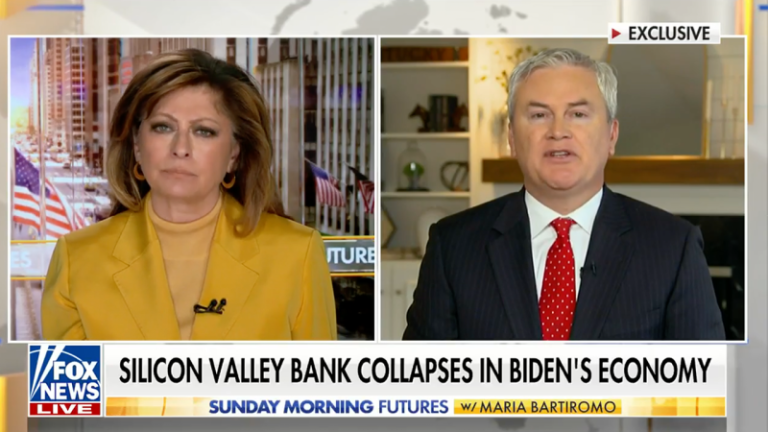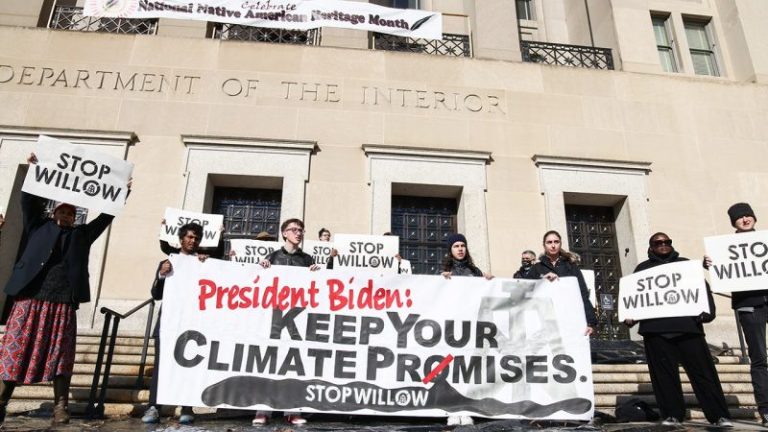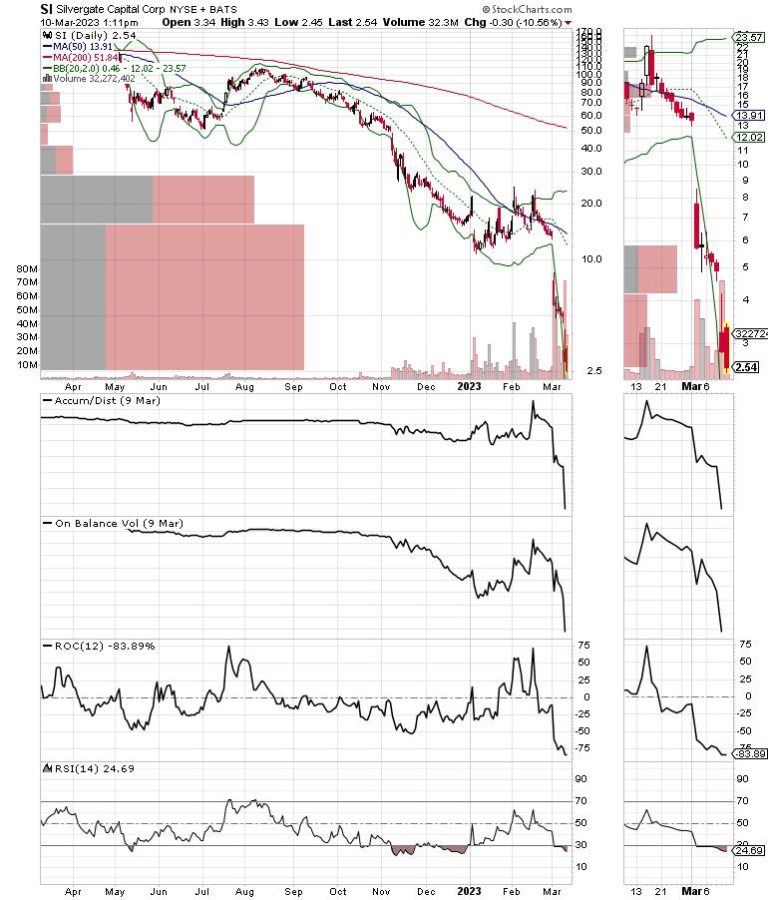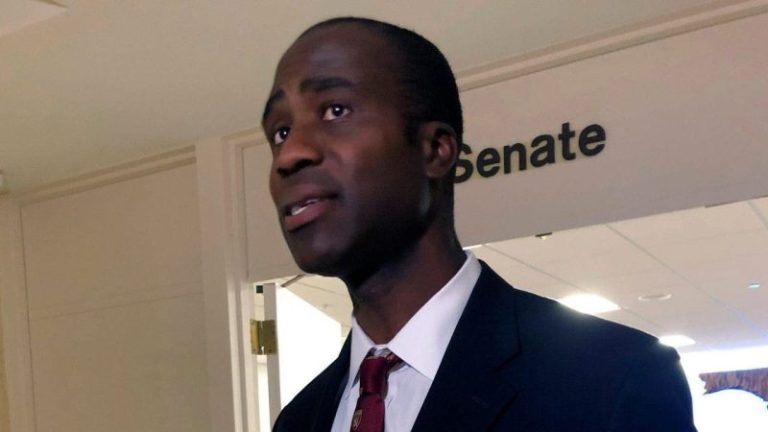The stock market is on the verge of falling into bear market territory as investors react to the failure of Silicon Valley Bank (SIVB). The Federal Reserve will get the blame. Moreover, if history is any guide, there will be more surprises as potential defaults rise and margin calls mushroom.
As I’ve noted here for the past several weeks, the financial markets were on the cusp of a liquidity crisis. Thus, even though I suggested that a short-term bounce in stocks was possible ahead of the upcoming CPI report and the next FOMC meeting, last week’s events erased that possibility for the moment, barring something very dramatic such as the Fed reversing its “higher for longer” rate mantra and replacing it with a “whatever it takes” statement, followed by aggressive easing of monetary policy.
Don’t hold your breath.
Two Bank Runs in One Week
Two important events unfolded last week, right after Powell wrecked the stock market with his Congressional testimony. First, crypto-related entity Silvergate Capital (SI) announced it was shutting its doors. Then, news broke that Silicon Valley Bank (SIVB), a mega-funder of technology startups, was facing what I warned about and offered tips on how to manage in a recent video: a liquidity crisis. By Friday, 3/10/23, the FDIC had shut down SIVB.
The cause is the Fed’s rate hikes, which are crushing small and medium banks’ deposits and capital structures. In addition, higher rates are making the problems in the economy worse, including commercial real estate defaults, layoffs in the technology sector, the ongoing war in Ukraine, and now the specter of Medicare cuts.
Regular readers were advised of the possibility of this situation developing here and here.
We are here because all it takes is for one or more entities default on a loan or develop a disruption to cash flow before the dominoes start to fall. That’s what happened at Silicon Valley Bank. Incidentally, I recently posted a series of articles offering more details on how SIVB imploded and what may follow at my Buy me a Coffee page.
How Healthcare Stocks Could be the Next Domino
Along with commercial real estate, and now the banking sector, health care is also poised for big problems due to looming cuts in Medicare spending.
Medicare and Medicaid account for 45% of the Federal budget, and Medicare is reportedly bordering on insolvency. The government wants to cut spending in order to improve Medicare’s finances. As a result, Wall Street is worried about the potential decreases in future earnings for biotech, pharmaceutical, and health insurance companies.
Case in point are the shares in Medicare Advantage heavyweight Humana (HUM), whose shares have plummeted over the last few weeks and recently broke below the key support level of their 200-day moving average. On the big pharma side, you can see similar action in shares of medical equipment giant Medtronic (MDT).
Two things are apparent. One is that Medicare cuts could hurt these companies, significantly. The other is that the Federal Reserve’s rate hikes are going to make things worse, especially if the jobs market collapses over the next few months and the insurable pool shrinks, translating into lower earnings for health insurers and for companies such as Medtronic, whose products include pacemakers and sophisticated spinal implants.
The Accumulation/Distribution (ADI) and On Balance Volume (OBV) indicators for MDT suggest that short sellers (ADI) are piling on and buyers are leaving in droves (OBV), as both are heading lower. Humana shares are also weak, as short sellers (falling ADI) have been active since late 2022 while buyers have been scarce at best (OBV) during the period.
It’s clear investors are souring on the healthcare sector as Medicare cuts loom.
On the other hand, at some point, even if it’s months away, the odds of a significant buying opportunity emerging in healthcare stocks is not just possible, but likely. That’s because, as the election gets closer, Washington is likely to ease back the throttle on tough talk about Medicare cuts. So, for now, patience and vigilance are the keys to future success in this sector.
I have recently added several new picks to my model portfolio in order to deal with these and perhaps future adverse events. Check them out with a free trial to my service here.
Reversal in Bond Yields Suggests Rising Investor Fear as CPI and the FOMC Loom
I’ve been writing about the potential for a decline in bond yields for the past few weeks, since the U.S. Ten Year note yield (TNX) had failed to remain above the 4% level on multiple tries. I noted that this failure was “the first potentially bullish sign of a turnaround in the markets.” I was half right, as the 4% yield proved to be at least a short-term top for TNX. Unfortunately, the drop in yields we saw on 3/10/23 resulted from the SIVB collapse, as I described above. Thus, money is moving into bonds due to fear, not because the Fed has vanquished inflation.
As a result, what comes next is uncertain due to what happens to inflation (CPI is out 3/14) and because the Fed meets on 3/21 and 3/22, after the CPI release. What that means is that a “bad” CPI will be seen as a reason for the Fed to be more aggressive on raising rates (50 basis points instead of 25), a development which is likely to create more volatility in the bond and stock markets.
So far, the Fed’s rate hikes and fear mongering about more rate hikes have crashed two banks and could trigger a rapid decline in the economy, as the stock market crumbles and consumer spending dries up. Remember MELA – the MELA System – where the stock market is the key to the economy via the wealth effect.
Possible Silver Lining for Mortgages
The Ten-Year note yield plunged to end 3/10/23 at its 50-day moving average. If that is not rapidly reversed, it should have a positive effect on mortgage rates next week. It will be interesting to see if enough potential home buyers materialize if mortgage rates fall in response to the fall in yields.
If mortgage rates fall, mortgage demand may rise as buyers swoop in on what could be a short-term buying opportunity. If there is no pickup despite lower rates, it would be a bad sign for housing and for the general economy.
The homebuilder sector (SPHB) has consolidated recently and showed some relative strength on 3/10 as hopes that falling bond yields will pull buyers off the fence. A bounce here would likely signal that mortgage activity has picked up.
On the Verge of New Bear Trend
The technical environment for stocks completely reversed last week after flashing positive signs on 3/3/23. While bond yields fell, the NYAD, SPX, NDX, VIX, and XED all turned bearish.
The New York Stock Exchange Advance Decline line (NYAD) broke below support at its 20-day and 50-day moving averages and is now testing its 200-day line. A further break would put stocks back into bear market territory.
Meanwhile, the S&P 500 (SPX) failed to hold above the 4000 and its 200-day moving average. This is also bearish. Note the rolling over of ADI, which signals that short sellers are once again piling on.
For its part, the Nasdaq 100 Index (NDX) also broke below support at its 200-day moving average, adding to the short-term bearish scenario.
Adding to the list of worries, the CBOE Volatility Index (VIX) broke out to a new high as the bears came out of hibernation. When VIX rises, stocks tend to fall, as rising put volume is a sign that market makers are selling stock index futures in order to hedge their put sales to the public. A fall in VIX is bullish, as it means less put option buying, and it eventually leads to call buying, which causes market makers to hedge by buying stock index futures, raising the odds of higher stock prices.
Liquidity finally stabilized, as the Eurodollar Index (XED) has found new support at 94.75 after breaking below 95 which had been a reliable support level. Usually, a stable or rising XED is very bullish for stocks. On the other hand, in the current environment, it’s more of a sign that fear is rising and investors are raising cash.
You can learn more about how to gauge the market’s liquidity in this Your Daily Five video.
To get the latest up-to-date information on options trading, check out Options Trading for Dummies, now in its 4th Edition—Get Your Copy Now! Now also available in Audible audiobook format!
#1 New Release on Options Trading!
Good news! I’ve made my NYAD-Complexity – Chaos chart (featured on my YD5 videos) and a few other favorites public. You can find them here.
Joe Duarte
In The Money Options
Joe Duarte is a former money manager, an active trader, and a widely recognized independent stock market analyst since 1987. He is author of eight investment books, including the best-selling Trading Options for Dummies, rated a TOP Options Book for 2018 by Benzinga.com and now in its third edition, plus The Everything Investing in Your 20s and 30s Book and six other trading books.
The Everything Investing in Your 20s and 30s Book is available at Amazon and Barnes and Noble. It has also been recommended as a Washington Post Color of Money Book of the Month.
To receive Joe’s exclusive stock, option and ETF recommendations, in your mailbox every week visit https://joeduarteinthemoneyoptions.com/secure/order_email.asp.









